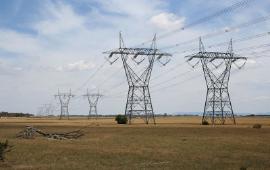Smart grid to address balance of power

In Summary
- This article featured in Swinburne’s 2017 ‘Research Impact’ magazine, produced in association with Nature Publishing Group.
A Swinburne researcher is part of a team that has come up with a plan to upgrade Australia’s electricity network and save taxpayers billions of dollars.
The ageing electricity grid is one of the largest pieces of infrastructure in the country. But, it was built in an era when electricity flowed one way — from power stations to the consumer.
The system is no longer linear, as homes and business-owners increasingly install solar panels and supplement their network supply. Some feed excess electricity back into the grid, creating a two-way flow of electrons.
Distinguished Professor Qing-Long Han, Swinburne’s Pro Vice-Chancellor (Research Quality) says the grid sometimes struggles with this intermittent, two-way supply and demand. He says some power companies have restricted new solar connections because they don’t feel confident in their capacity to maintain a steady electricity supply with these fluctuating sources.
Professor Han and his colleagues from Griffith University, Central Queensland University and RWTH Aachen University of Technology in Germany have devised a system that would utilise the existing infrastructure, but bolt on 21st-century technology to maximise the value Australians get from the grid.
The system employs the mathematical concept of advanced networked control to manage switching between the various sources of supply — whether that be a large wind farm, a coal-fired power station, an industrial battery, or a lone solar panel on a suburban street.
With advanced networked control, local sources of power and batteries can communicate with each other and work collaboratively to co-ordinate their supply or demand from the larger grid.
Professor Han says moving away from the idea of central control avoids the challenges of communications technologies dropping out at crucial moments.
“We tried to find an evenly distributed way of control, and also co-ordinated control.”
He says using a probabilistic approach allowed them to get around the challenges of intermittent supply. They dictated the amount of risk of failure they were willing to tolerate in the system and let the mathematics determine how to manage the supply.
The increasing use of battery systems for electricity storage will also play a key part in maintaining a steady supply across the whole of eastern Australia and beyond.
“With our methodology we want to use the existing network — that’s how we’ve tried to reduce the cost,” he says.
Some $36 billion is slated for network upgrades in coming years — just to maintain the status quo. But Professor Han says their system will be more cost-effective and would allow increased use of renewable energy. This would prevent the need for new power stations, realising further savings, and help to address climate change.
Peter Wolfs, one of Professor Han’s collaborators from Central Queensland University, says even if the system is not adopted by the grid, the system has application on smaller scales. “Universities have electricity bills in the millions of dollars each year. With advanced networked control and battery storage, they could make better decisions about when to sell their electricity into the grid.”

